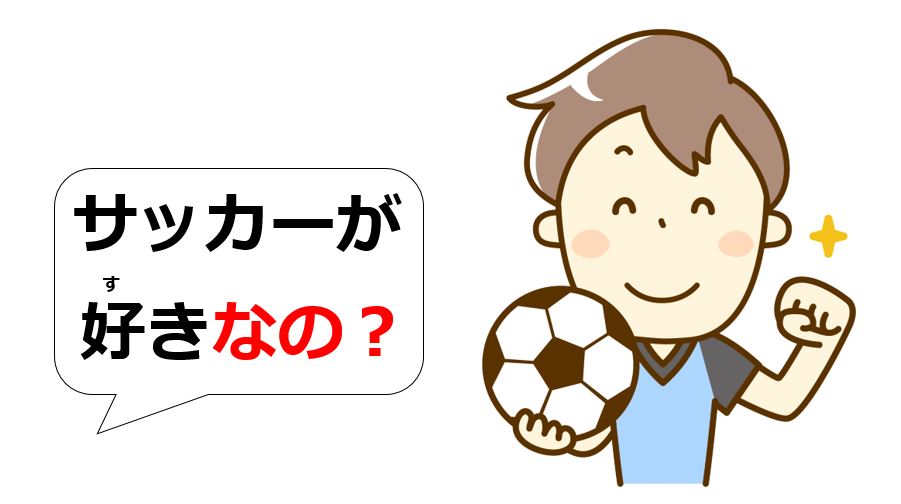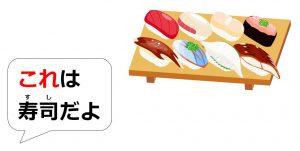Last time, you learned how the explanatory のだ (んだ) works like “これが雪なんだ.” The functions are to express reasons, interpretation, discovery, summary (rewording), and preliminary remarks. This can then be utilized for question markers. In this lesson, you will learn how to make interrogative sentences with the question markers か and の.
Interrogative Sentences with Question Markers か and の
Interrogative sentences can be divided into two categories. The first is Open Question, which has an unlimited number of answers and generally means wh-question, e.g. “What fruit do you like?” The second is Closed Question, which has only two answers: yes or no, e.g. “Do you like fruit?” We will tackle closed questions first and open questions in the next lesson.
Plain Question Marker か
This is a basic question maker and thus you can use this without much considerations. The function is just to make questions. Let’s check the conjugations.
(Casual) Nouns and Na-adjectives: to Replace だ with ?
| 田中さんは大学生? Is Tanaka-san a university student? |
| 犬は好き? Do [you] like dogs? |
(Casual) I-adjectives and Verbs: to Attach ?
| 大きい犬は怖い? Are big dogs scary [for you]? |
| 明日は勉強する? As for tomorrow, will [you] study? |
(Polite) All Elements: to Attach か?
| 田中さんは大学生ですか? |
| 犬は好きですか? |
| 大きい犬は怖いですか? |
| 明日は勉強しますか? |
In interrogative sentences, the last letter is always pronounced with rising intonation. Some people actually use different forms from the above depending on their dialects or age. However, the intonation remains the same, thus you can figure out whether it’s an interrogative sentence or not by paying attention to the last sounds.
Normal
| (Casual) 田中さんは大学生?↑ |
| (Polite) 田中さんは大学生ですか?↑ |
Exception
| (Dialect) 田中さんは大学生です?↑ |
| (Literary Style) 田中さんは大学生か?↑ |
[adsense]
Connotative Question Marker の
The origin of the connotative question marker の comes from the explanatory のだ. Although the functions don’t match exactly, the basic idea remains the same. First, take a look at the conjugation.
(Casual) Nouns and Na-adjectives: To Replace だ with なの?
| 田中さんは大学生なの? |
| 犬が好きなの? |
(Casual) I-adjectives and Verbs: To Attach の?
| 大きい犬が怖いの? |
| 明日は勉強するの? |
(Polite) All Elements: To Attach か? to the Polite Form of のだ
| 田中さんは大学生なんですか? |
| 犬が好きなんですか? |
| 大きい犬が怖いんですか? |
| 明日は勉強するんですか? |
In colloquial expressions, の becomes ん as we learned that のだ is formal and preferred in writing while んだ is casual and preferred in speaking. Here we show you examples with ん. And also, just like the plain question marker か, the last letter is always pronounced with rising intonation.
Normal
| (Casual) 田中さんは大学生なの?↑ |
| (Polite) 田中さんは大学生なんですか?↑ |
Exception
| (Dialect) 田中さんは大学生なん?↑ |
| (Dialect) 田中さんは大学生なんです?↑ |
| (Literary Style) 田中さんは大学生なのか?↑ |
Connotation: To Seek Clarification
The connotation that the の has is to seek clarification based on background contexts, while the か doesn’t require any context. With the following examples, the speaker tries to clarify something.
| 田中さんは大学生(なの / なんですか)? |
| Is Tanaka-san a university student? *Said when you came to think he might be a university student after having conversations. |
| 犬が好き(なの / なんですか)? |
| Do [you] like dogs? *Said when you saw that someone looked very happy while watching dogs. |
| 明日は勉強する(の / んですか)? |
| As for tomorrow, will [you] study? *Said when you saw that someone neglected studying today. |
Comparison
When you bump into your friend, you ask “Will [you] go to the festival with me?”
| 一緒にお祭りに(行く / 行きますか)? => Natural |
| 一緒にお祭りに行く(の / んですか)? => Unnatural |
The first example sounds making invitation. However, the second one sounds something like “Are you sure that we will go to the festival together?” It’s obvious that you should not use the second one for inviting. Be careful. The plain question marker か allows you to just ask yes or no while the connotative question marker の allows you to clarify something that you doubt about. You may sometimes be rude if you suddenly try to clarify something without contexts.
Summary
- The question marker か expresses plain questions.
- The question marker の seeks clarification.
- The last letter in interrogative sentences is pronounced with rising intonation.
Again, contexts are the key to choosing a proper question marker. In practice, native speakers often use both of them and so you should also try to use both while looking at contexts. Now, you know how to make closed questions. Next, you will learn one of the important concepts for making open question: demonstratives.





